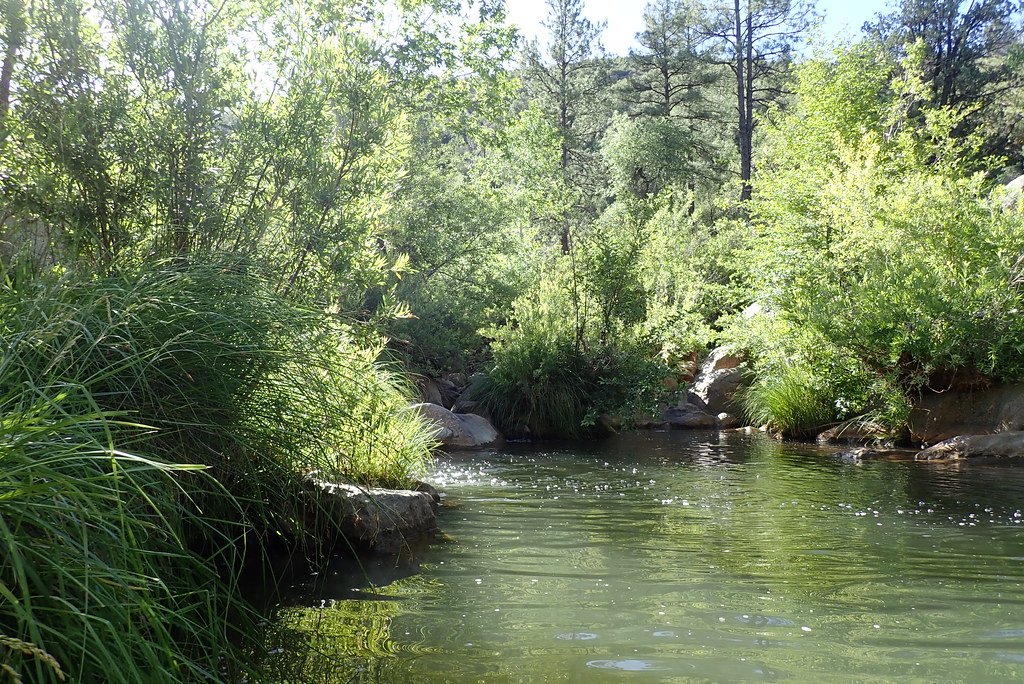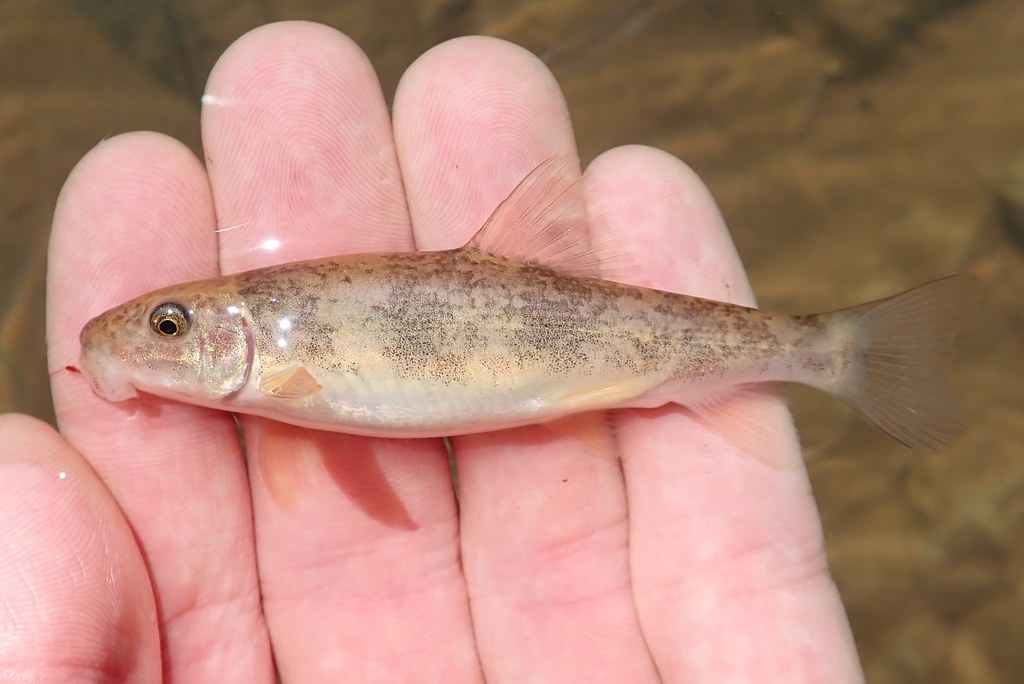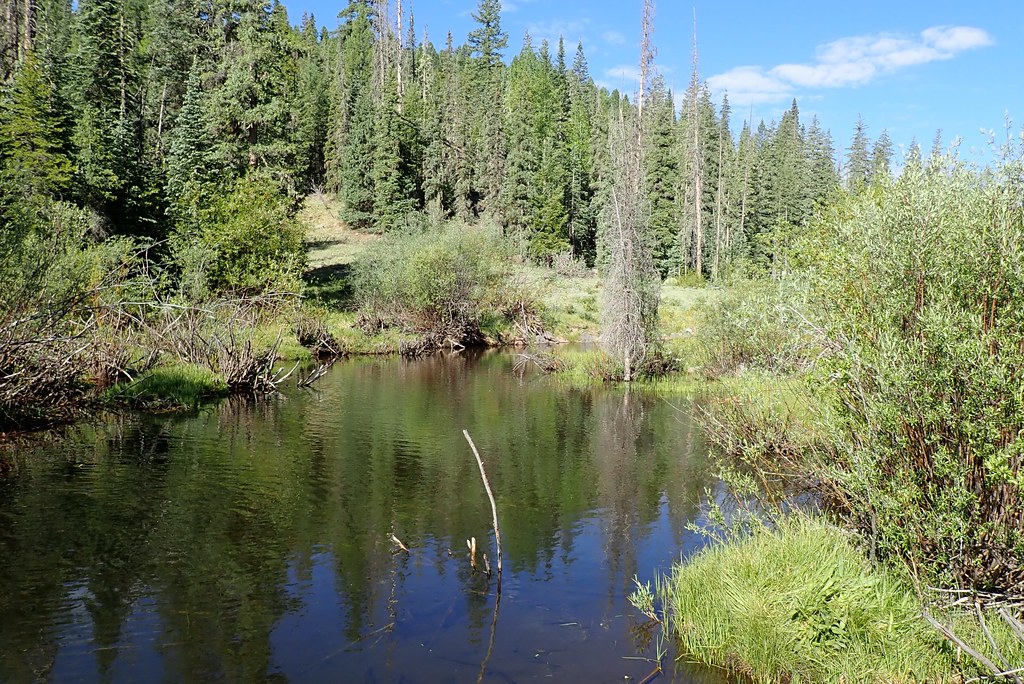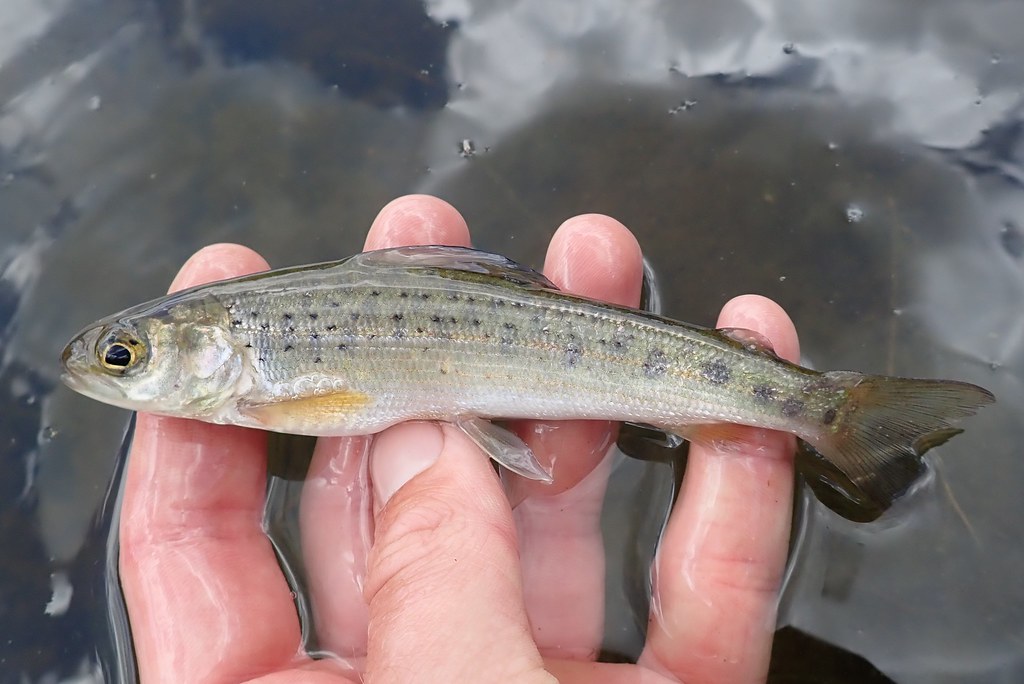It's been a tough year for those of us who enjoy traveling. I had to cancel trips to Puerto Penasco and Fort Lauderdale this spring, but the big Arizona road trip on my calendar in June still felt doable. Chris and his boys have scouted out a ton of fishing spots around the state, and we worked together to make an itinerary that would put me on as many new species as possible. In particular I wanted to catch Gila trout and Apache trout, so they became the anchor points that we planned the rest of the trip around.
The fishing started at the same urban ponds where I caught common carp in December. My targets were Nile tilapia, koi, and inland silverside. If we somehow knocked all three out with time to spare, then we could head down the road to the Lower Salt River and try for a pleco. Chris met me at one of the ponds, and we got out the micro gear to fish for silversides.
I have no idea where the silversides go in winter, but in summer they're easy to find. Most of them were small, but we walked around the ponds until we found some large ones. A little piece of bread in the water would get them feeding, and then a tiny piece of bread on a Tanago hook would catch them. I had my first new species of the trip!
Inland Silverside (Menidia beryllina) - new hook & line species #662
We saw quite a few individual koi as we walked around the ponds but not any big groups. After quite a bit of walking we decided that chumming a spot with corn was a better strategy than trying to sight fish individuals. It took some time, but eventually four or five koi showed up and started feeding on the corn. I got a few bites, or maybe the fish just bumped my line, but I couldn't connect with one. Chris wandered off to check a few other spots. He gave me a call and said he had a koi in front of him that was feeding on algae on the surface. I was torn on whether or not I should abandon my spot, but finally I decided to catch up to Chris and try for the one he saw. It was still feeding on the surface when I got there, so I put a ball of bread on my hook and set it on the algae next to where it was feeding. When it's lips touched the bread, it swung it's head over and sucked it in! I set the hook, and after a short fight Chris had the koi in the net!
Amur Carp / Koi (Cyprinus rubrofuscus) - new hook & line species #663
Chris said if the the tilapia were biting we should be able to see them from shore. We didn't see any, and by the time I caught the koi the sun was setting, so we called it a day. The next morning I hit the road early and visited a stream where Chris and his boys all caught Gila trout. The Arizona Game and Fish Dept stocks them frequently, so it wasn't hard to find them or catch them. Walk upstream from the road crossing and fish the first deep pool you find, and the trout will be there.
I had the pool all to myself, and it was a nice cool morning. I put a small white plastic worm on my size #8 hook and flipped it up towards the head of the pool. It sank out of sight and almost immediately my line went tight, and I caught my first Gila trout! I repeated this process and ended up catching ten of them in about an hour. A few of them had body sores from the hatchery, but most of them looked good. The biggest one I caught posed perfectly for my lifelist photo.
Gila Trout (Oncorhynchus gilae) - new hook & line species #664
Chris suggested I check out another access point just up the road because he saw micros there in the past, including juvenile suckers. I didn't want to spend too much time there, but I walked the bank for bit, and sure enough there were speckled dace and juvenile desert suckers cruising around the rocks. It took a bit of patience to get past the dace and entice a sucker to chase down my bait, but eventually one of them went for it!
Desert Sucker (Catostomus clarkii) - new hook & line species #665
And of course I'll include the obligatory sucker lips photo. Remember folks, if you catch a sucker, you have to take a shot of its lips before you let it go. Desert suckers are interesting in that their upper lip develops into an algae scraper as they mature. They look downright weird as adults, and I'd love to catch one someday.
From there I headed northeast where I would eventually meet Chris and his boys in Show Low. I took the scenic route, driving a good part of the way on fire access roads. It's been a long time since I've done a good road trip in the Subaru, and I think it was happy to get dirty.
I stopped at one creek along the way but didn't get out fishing gear. It had speckled dace, fathead minnows, red shiners, and western mosquitofish, and unfortunately only one of those is native. There were probably other fish in the deeper pools, but I didn't stick around to find out what they were.
The plan didn't have us trying for Apache trout until the next day, but Chris said there was a stream just outside of town that had them stocked. We had about an hour to fish before the sun set, so it was worth a try.
It took a bit of walking and quite a few casts to find fish, but eventually I ended up with two rainbow trout. Chris caught a big speckled dace, and all of us caught crayfish. I don't know how they managed to grab on, but I caught several crayfish on my plastic worm while it was being actively retrieved.
Rainbow Trout (Oncorhynchus mykiss)
While we were fishing I spotted a pronghorn grazing in the field behind us. I saw my first pronghorns in Idaho a few years ago when I was visiting Matt Miller, but I didn't realize that their range extends down into Arizona. They're strange looking mammals!
The next morning the four of us drove our two vehicles to a stream that has both wild and stocked Apache trout. The elevation here was nearly 9000 feet, and the water was cold! It took us a while to find fish, and it was Chris and his boys who finally found a hole with several trout. I was the only person in the group who hadn't caught one, so they were very generous to call me over and let me have the first cast.
I didn't bother with anything fancy, just a worm on a small gold jighead. It took me several tries to get the jig to land in just the right spot, but with three people looking over my shoulder I finally got it right and hooked the trout that grabbed it. Success! In two days I was able to catch Arizona's two native species of trout. They were stocked fish, but I'm happy knowing that my fishing license is going towards keeping their populations intact.
Apache Trout (Oncorhynchus apache) - new hook & line species #667
Chris and his boys each caught Apache trout as well, which they wanted for photo upgrades. After they were finished I leaned out on a dead tree trunk and stuck my camera in the water to try to photograph the trout in the pool. This shot below turned out pretty well.
Next we headed south to Lee Valley Reservoir, which is stocked with Apache trout and arctic grayling. We walked the shoreline and fished artificials, but it was getting windier and windier, and we didn't get any bites. We chatted with an AZGFD officer who was checking fishing licenses, and she suggested Aker Lake for grayling. Aker Lake was actually going to be my next stop, but I was happy to hear that people had been catching grayling over the past few days. We got a group photo before we parted ways, since Chris needed to get back to Phoenix.
When I arrived at Aker Lake I had it all to myself for the first half hour. It's tucked away high in the mountains and definitely a special place. The surrounding hills and pine trees did a good job of blocking the wind.
Grayling were actively feeding on insects on the surface. I had a small box of flies but no fly rod, and even if I did I wouldn't know how to use it. I tried casting a fly with spinning gear using a bobber as weight, and it got two half-hearted swipes. I also spent some time with a small gold Kastmaster, and it got hit twice. I hooked one of the fish and had it on for a few seconds, but it was able to throw the hook. I was running out of time, so finally I got out the Tenkara rod, put a tiny plastic grub on the Tanago hook, and sight fished a small grayling near shore.
Arctic Grayling (Thymallus arcticus) - new hook & line species #668
As I was releasing the fish, a big grayling around 13 inches casually cruised past right next to shore. I was ok not catching one like that, because I think it was the universe telling me that I should learn how to fly fish. I headed out and unfortunately had to backtrack to the north to avoid wildfires that had closed the highway to the south. My detour took me east into New Mexico, and it was a long drive to make it down to the town of Willcox where I had a motel booked for the night. New Mexico was beautiful though, and I enjoyed stopping to take in the views.
I was a long ways from San Diego, so most of my last day was spent driving. I had time to stop at one creek in the southeast part of the state. It had a mix of minnows and juvenile suckers, and I caught some longfin dace there and got a few photos.
Longfin Dace (Agosia chrysogaster)
Most of our time was spent in forests that you wouldn't typically think of when you think of Arizona, and I got to see a lot of wildlife. Mammals included pronghorn, deer, and jackrabbits, and Chris and his boys said they saw elk that I somehow missed. Birds included roadrunners, quail, and hummingbirds. As I was leaving the last spot I stopped to let a flock of turkeys cross the road.
Thank you Chris and everyone in your family for being so generous. I had a great trip, and my list of fishing targets in Arizona is considerably smaller now. I'll be back for the Nile tilapia and a few more native species in the future!





















No comments:
Post a Comment
Note: Only a member of this blog may post a comment.